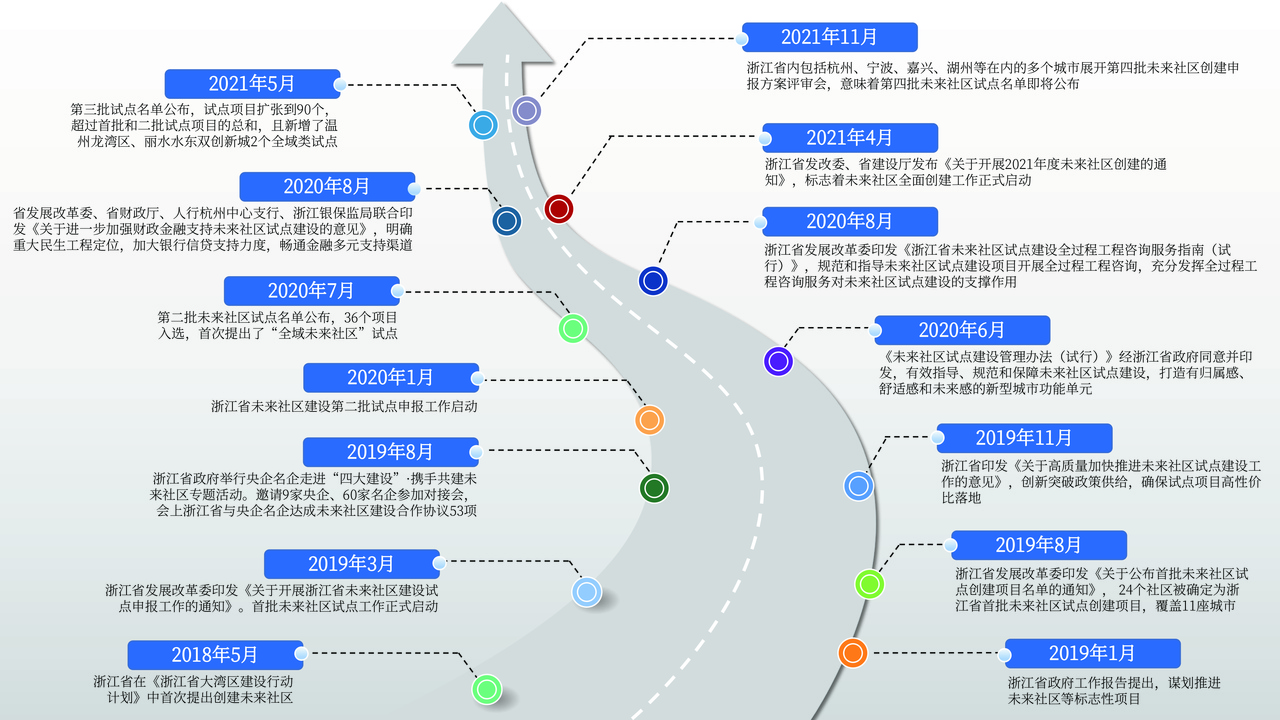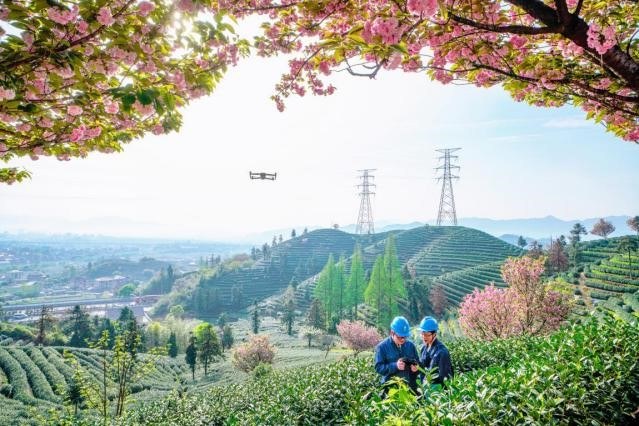
The Liangzhu Culture and Art Center is one of the landmarks in Liangzhu Culture Village
How can we make cities and communities more intelligent and smarter? With the arrival of a new round of technological revolution and industrial transformation, what will be the future of the community?
Perhaps the answer can be found in Zhejiang province’s development of “future communities”.
During the “two sessions”— annual meetings of provincial lawmakers and political advisors — of Zhejiang province in 2019, the concept of “future communities” was officially written into the Government Work Report. In March that year, Zhejiang Provincial Government officially launched the pilot program for future communities, and issued the Zhejiang Province Future Community Construction Pilot Work Plan (hereinafter referred to as the Plan), articulating the significance and the intended goals of future communities.
So far, 150 pilot projects have been approved, with a total investment of 632.3 billion yuan, benefiting 638,000 residents directly. At present, work on the first three batches of pilot projects has already started. By the end of 2021, Zhejiang aims to nurture 100 provincial-level future communities, which will be promoted throughout the province starting in 2022, so as to lay a solid foundation for future urban development. Most importantly, Zhejiang will make sure that residents “move in smoothly and live here affordably and happily”, so that they will truly enjoy a sense of gain, happiness and security.
As the first province in China to propose the construction of future communities, what difference will the experimentation bring to the practice of community governance in Zhejiang?
When it comes to “future communities”, many readers might find it unfamiliar. However, examples and models of “future communities” abound outside of China, especially in developed countries, such as Quayside Future Community in Canada, created to build a smarter, green and inclusive city. Besides, the BLOCK model in Europe, the COMPLEX model in Singapore and shared housing in Japan are also variations of future communities.

The devlopment of future community construction
In China, as residents’ income rises and urbanization forges on, the public demand for high-quality life is stronger by the day. Before the future community project was proposed, in December 2018, Zhejiang Provincial Development and Reform Commission conducted a survey on “future communities”.
The results showed a host of problems in residential communities, such as putting a premium on the economic value of real estate, weak neighbor relationships, a lack of cultural exchange platforms and inadequate community medical care. There were also issues arising from dense population, including street congestion, parking difficulties, inconvenient public transportation and poor delivery services.
Indeed, in Zhejiang’s rapid urbanization, some “urban diseases” gradually worsened. Statistics show that in 1978, Zhejiang’s urbanization rate was 14%, which nearly quadrupled in 2018, reaching 68%. However, as cities gradually expand and develop, social security, infrastructure and ecological environment are not catching up. The development of old and new communities is uneven, and since many old residential areas sit right in the core area of urban development, the phenomenon of “old, broken and cramped” (apartments) in the city center has emerged, adversely impacting on the living experience and the urban landscape. Thus, relying on years of experience in community construction, Zhejiang creatively put forward the project of building “future communities”, which will not only solve these problems, but also inject new vitality into the future of communities.
But why Zhejiang? Why of all places in China, it is Zhejiang that has taken the lead in building future communities? It boils down to Zhejiang’s robust urban development, social development as well as the popular demand. For one thing, the province’s urbanization has reached a high level; in 2019, its urbanization rate exceeded 70%. For another, Zhejiang’s economic and social development has enabled its pursuing high-quality development. Taking the digital industry as an example, the foremost industry to promote Zhejiang’s high-quality development. In 2019, its added value increased by 15%, accounting for 10% of the regional GDP.
The public demand for future communities is also urgent, particular those residents living in the old communities who need to improve the quality of life. As one of the landmark projects to promote Zhejiang’s high-quality development in urbanization, future communities are destined to attract various talents too.
When General Secretary Xi Jinping visited Zhejiang, he stated that Zhejiang should “strive to become an important window to fully display the superiority of the socialist system with Chinese characteristics in the new era”. To that end, Zhejiang’s development of future communities will focus on working to satisfy people’s pursuit of happiness. These future communities should both reflect the “future” and remain “simple” in that mindlessly chasing after “futuristic” and “trendy” appearances for the communities should be avoided at all costs, for the real benefits should all be accrued to the people.
In fact, people-centeredness is one of the central tenets in developing future communities in Zhejiang, which is both spelt out in the Plan and shown in its implementation. For example, most of the community construction schemes in the past would only look at the effect of an aerial view, while the future community projects in Zhejiang center on people, and all possible scenarios have been designed to meet people’s needs within a 5 to 10 to 15 minutes of community life circle.
In the future, future communities will bring four major benefits to Zhejiang: improving people’s livelihoods, spurring significant investment, driving industrial integration and promoting industrial transformation, according to the Zhejiang Provincial Development and Reform Commission. Indeed, apart from tackling the various existing problems caused by old communities, Zhejiang’s initiative to build “future communities” is supposed to bring in large flows of investment thanks to the demand they are expected to generate, help drive the formation of a digital-industry-powered industrial chain, and considerably improve efficiency and cut down on the waste that traditional management models give rise to.
Editor:Huang Yan





